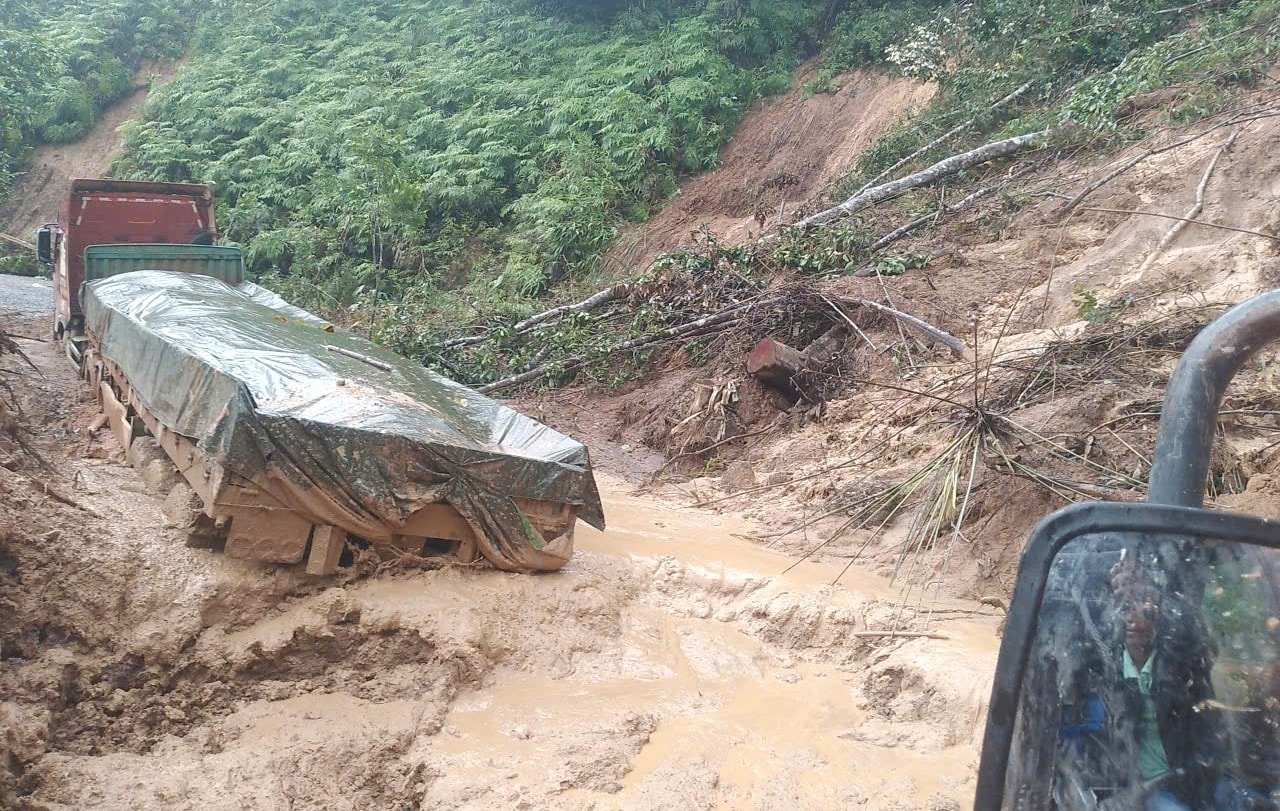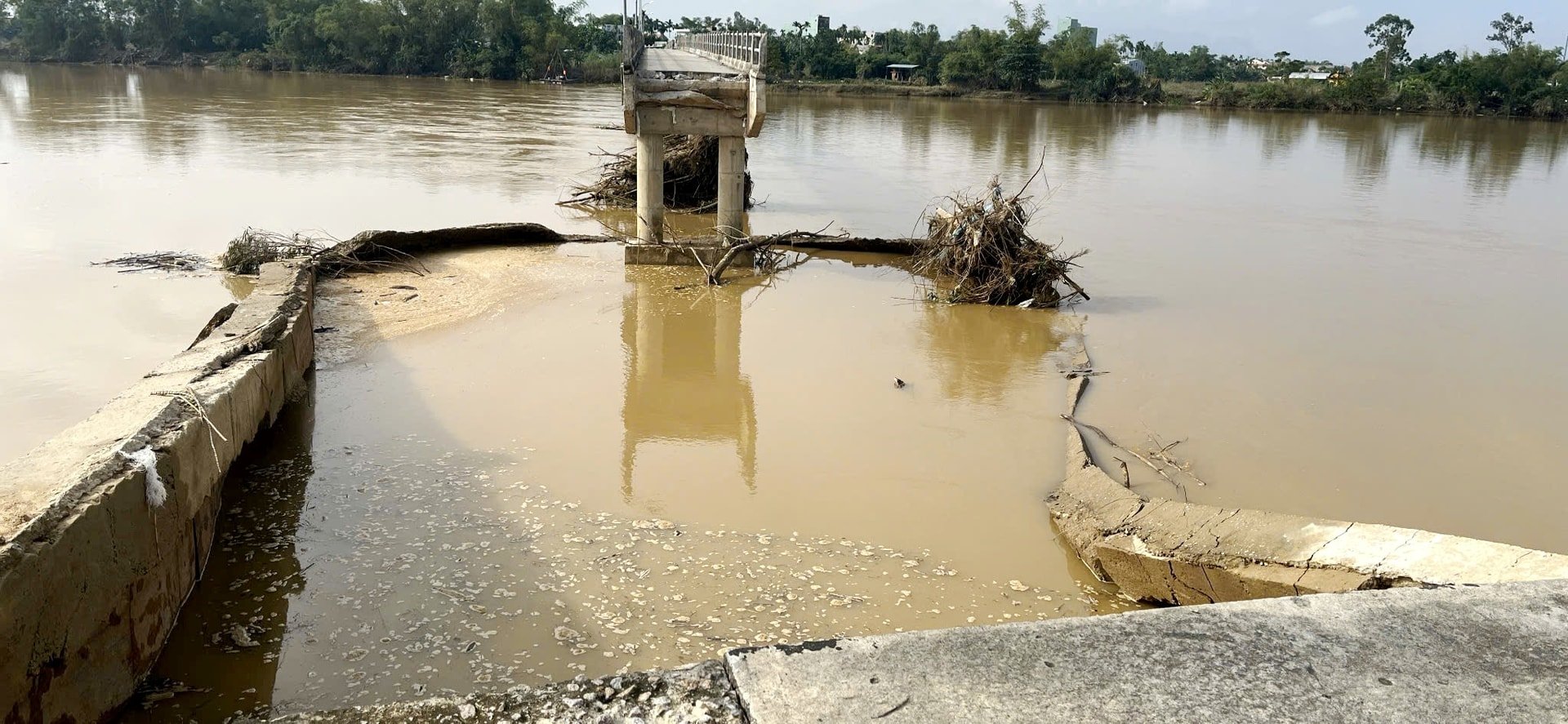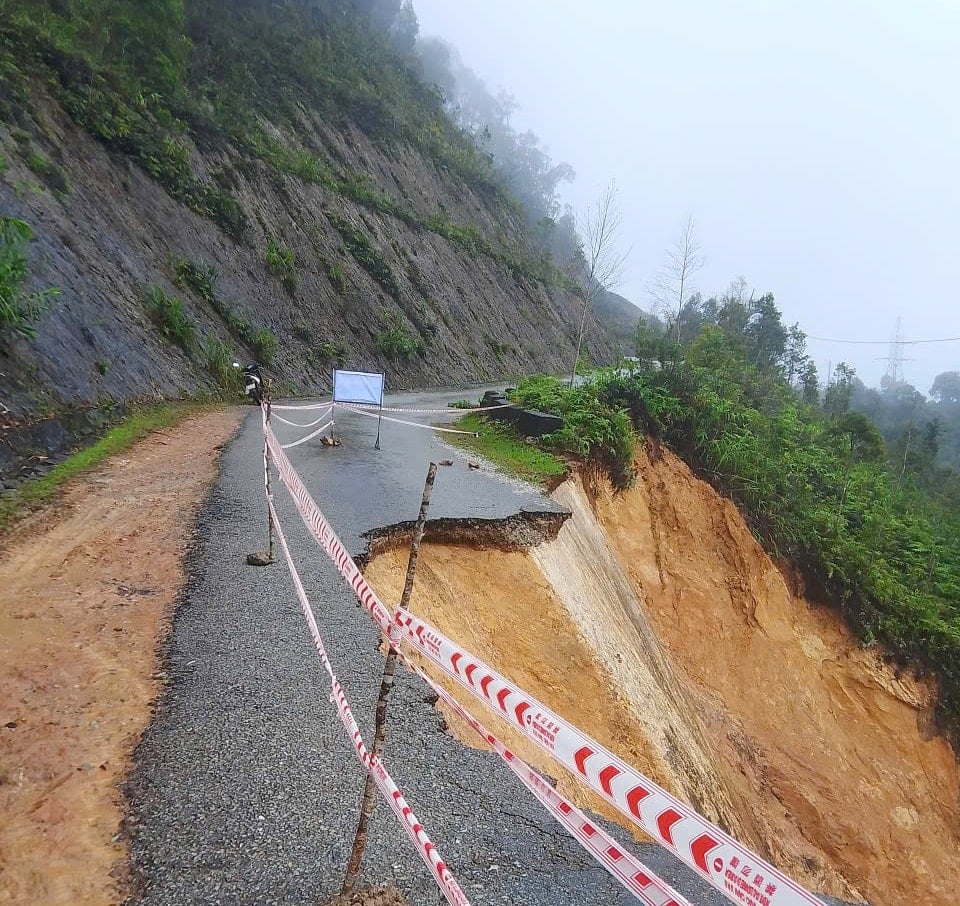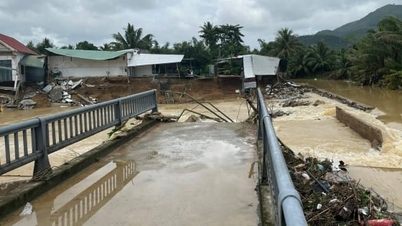
According to statistics from the Department of Construction, heavy rains from October 26 until now have caused severe damage to road and inland waterway infrastructure.
Just counting roads, the damage caused by floods to infrastructure managed by the Department of Construction has accounted for more than 200 billion VND.
The above figures do not include national highways (QL) and provincial roads (DT) that the authorities have handed over to investors who are carrying out renovation, upgrading and expansion projects; or roads under the management of commune level and Road Management Area III.
In recent years, there have been floods in the city, but the rains have not lasted long and the amount of water has not been particularly large, so the level of damage to road infrastructure has not been much.
But up to this point, the 2025 storm season has not ended, and most of the key traffic routes have encountered problems of varying degrees of severity. The cause is that extreme rain and floods repeatedly cause landslides, and landslides recur continuously.

During a field inspection during the recent heavy rains on National Highway 40B, a specialist from the Da Nang Infrastructure Maintenance Board (Department of Construction) shared that the pouring rain from above was like a ferocious waterfall, dragging rocks, soil, and trees down from the slope.
The water flowed rapidly under the longitudinal ditch, overflowed the road, swept away the drain, and broke the negative slope.
Many traffic participants, including disaster response forces, were lucky to escape from the unusual landslide site.
In addition to objective causes due to natural disasters, heavy damage to road infrastructure also comes from many factors.

From the perspective of subjective causes, engineer Nguyen Van Sy, Deputy General Director of Quang Nam Traffic Construction Joint Stock Company, acknowledged that people arbitrarily cleared roads to high hills to exploit acacia trees but did not restore the original state.
This action unintentionally changes the natural flow every time it rains. Because the temporary road is like an “artificial stream”, the rainwater just gathers and flows strongly down, washing away rocks and soil without being obstructed by trees or vegetation.
According to experts, over a long period of time, the geology of the mountainous region of Quang Nam has changed from weathered rock to soil. Therefore, the hills do not have a thick enough cover, the forests cannot retain water, causing damage to the transport infrastructure.
Da Nang has a narrow and steep terrain, and is divided by many rivers and streams. During the rainy season, water from upstream flows down very strongly.
If sand mining in the midlands and deltas is not controlled, the natural flow will be changed, swirling strongly into the negative slope of the road causing erosion, leading to road breakage...
Source: https://baodanang.vn/duong-bo-thiet-hai-nang-dau-la-nguyen-nhan-3311696.html














































































































Comment (0)